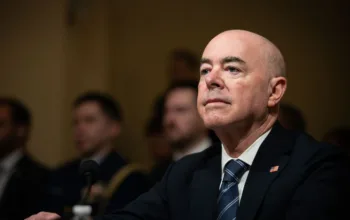We’re still contemplating the thorny brilliance of throwing soup on Sunflowers.
“What is worth more, art or life?”
This question — and what would normally be an obvious answer — got a lot more complicated on October 14 when two protesters for the climate activism group Just Stop Oil threw tomato soup on Vincent van Gogh’s Sunflowers at London’s National Gallery. Immediately after the stunt, the protesters challenged onlookers with this query.
“Is it worth more than food? Worth more than justice?” the protester continued. “Are you more concerned about the protection of a painting, or the protection of our planet and people?”
Just Stop Oil made international headlines for this incident, with the onslaught of publicity leading to more attention than the group had ever before received. Yet much of the media and public attention was negative, with many questioning the efficacy of the protest and criticizing the protesters for hurting their own cause. By jeopardizing one of the most beloved works of art in the world, the group had obscured and overshadowed its actual message. True, millions of people were hearing about Just Stop Oil for the first time, but it was now likely in the context that reckless protesters had ruined van Gogh’s Sunflowers just to make a point.
But the protesters hadn’t ruined van Gogh’s Sunflowers. The painting, enclosed by glass, was completely unharmed; the National Gallery later confirmed that only the frame had been slightly damaged and that the protesters had been arrested.
Still, the real damage — to the urgent cause of battling the oil industry in the fight to save the planet — seemed to have been done. “Throwing soup at paintings won’t save the climate,” ran a typical media response, while TikTok immediately memed conspiracy theories that the protesters were actually hired by the oil industry to turn the public against oil protests. Multiple friends I spoke with following the incident had only heard that Sunflowers had been targeted, not that the painting was just fine. And few media write-ups even bothered to mention Just Stop Oil’s ultimate goal: to halt new oil licensing across Great Britain. So: Was it a successful protest?
“What is worth more, art or life? … are you more concerned about the protection of a painting or the protection of our planet and people?”@JustStop_Oil’s activists explain their action pic.twitter.com/mGNZIO6RbK
— Damien Gayle (@damiengayle) October 14, 2022
When I heard that the painting was unharmed, my reaction rapidly shifted from “This is horrifying” to “This might be the best protest ever.” At least, it’s one I’ll be thinking about for a long time to come.
These kinds of protests are perhaps having a moment; on October 23, the German environmentalist group Last Generation threw mashed potatoes on one of the paintings in Monet’s famous Haystacks series at the Museum Barberini in Potsdam. The artwork sold for a record $110 million in 2019. As with the van Gogh protest, the painting was enclosed behind glass, and the museum later confirmed it was unharmed.
“If it takes a painting … to make society remember that the fossil fuel course is killing us all,” the group later tweeted, “Then we’ll give you #MashedPotatoes on a painting!”
There’s a huge difference between a climate protest that destroys art in the name of saving the planet and a climate protest that threatens the destruction of art but doesn’t actually go through with it. The former treats the art and the cultural value we ascribe to it as incidental in the fight to save the planet, ignoring that a civilization without art is an incredible loss.
The second kind of protest, however, raises all kinds of questions in the absence of actual destruction. What would it have meant if we had lost Sunflowers? Such an act would have generated a period of international collective mourning, a unified sense of loss that no amount of urgency over the climate crisis has been able to equal. But what could the loss of one great painting — the reported $81 million value of which derives not only from its beauty and historical import but from the deeply subjective and often-fraught methods of the art market — mean to a civilization that doesn’t exist? The prospect of that loss, averted, allows us to seriously confront the degree to which we as a society collectively dismiss and downplay climate change.
One reason for this might be the sheer scope of the crisis: It’s so huge it’s almost impossible to fully wrap our heads around — the planetary version of one death versus a million deaths. It’s hard to look head-on at the real destruction climate change is already causing, and even harder to know how to make meaningful changes individually while battling climate anxiety. That can all lead to dismissiveness.
Serious reports of climate change often get misinterpreted and misunderstood, leading to more confusion and less clarity on what the real stakes are. Media depictions of individuals who confront the climate crisis — think S-Town or First Reformed — capture their desperation in ways that border on frightening. Such narratives use climate change to provoke a personal existential crisis, framing their subjects as mentally disturbed or perhaps just obsessed with the apocalypse. This stereotype carried over to reality when, on April 22 (Earth Day) of this year, the longtime climate activist Wynn Bruce died by self-immolation on the steps of the Supreme Court, in a final act of protest. The media, when it wasn’t ignoring Bruce’s death, portrayed him as mentally and emotionally unstable.
Meanwhile, Just Stop Oil, formed at the beginning of 2022, had been ramping up its protests for months. The group emerged from a cloud of controversy over the inflammatory climate activism group Extinction Rebellion (XR). XR’s founder, Roger Hallam, came under fire in 2019 after an interview published in Der Spiegel in which he compared climate change to the Holocaust and repeated a watered-down version of his extremist talking points, suggesting elites were withholding climate action as a form of maintaining power and predicting that the climate crisis would lead to mass rape. Hallam was accused of cultivating a “death cult” mentality about the climate crisis among XR members. But Just Stop Oil, begun by Hallam as a coalition of different activist groups, touts the more optimistic goal of taking its message directly to the oil industry.
The group had generated reams of negative press for blocking traffic in actions across the UK and Europe. In April, a week before Bruce died, one Just Stop Oil protester went viral for an interview with Good Morning Britain which strongly resembled the parody dramedy Don’t Look Up. In the interview, protester Miranda Whelehan attempted to focus on recent calls for strong, swift climate action — specifically a report released earlier in the month from the United Nations’ Intergovernmental Panel on Climate Change which called for “now or never” urgency to reduce global energy emissions. Instead, the pundits spent the interview deriding her and her fellow activists, criticizing them for blocking traffic and calling the crusade “playgroundish.”
“My fear is that they will only understand the reality of the climate crisis when it is on the doorstep,” Whelehan wrote later, “perhaps when the floodwater is uncontrollably trickling into their homes, or when they can no longer find food in the supermarkets.”
Just Stop Oil has been ramping up the creativity of its protests as well, taking to the astroturf to briefly interrupt Formula One racing events and, in June, creating a climate-apocalypse version of The Hay Wain, by 19th-century English painter John Constable, and draping it over the original. This protest, also in the National Gallery, saw multiple activists gluing themselves to multiple paintings in the gallery, and seems in retrospect like a trial run for the big event with Sunflowers. Once again, the Constable painting was undamaged.
More importantly, all of these actions on the part of Just Stop Oil have been peaceful — disruptive but not harmful. And up until the van Gogh protest, little of it has generated much public interest or sympathy.
Just curious about the appropriate tactics, because if the tomato soup idea was silly and alienating, and setting yourself on fire isn’t enough, and lawmakers criminalize protests, and blocking traffic is inconvenient, and books about activism get banned, what are the options?
— derecka (@dereckapurnell) October 15, 2022
In their quest to level up effective protesting, why did Just Stop Oil turn to art? Why involve one of the most famous paintings in the world — and what does it say about the relationship of art to modern consumerism that this one protest garnered more attention than all of their other protests combined?
The connection between art and political protest has a long history; as Jezebel noted after last week’s protest, “Destroying art is its own genre of political theater.” In 1913-14, numerous British suffragists destroyed or vandalized multiple paintings, including Velasquez’s famous nude Rokeby Venus, in response to the government’s attempt to suppress the work of their leader, Emmeline Pankhurst. Their logic was that if the government was going to destroy women, they would destroy art depicting women: “You can get another picture, but you cannot get a life,” one of the suffragists told the press.
In 2012, a man went to prison for punching a hole in a Monet (the painting was repaired) in a vague protest against “the state;” earlier this year, an individual smeared cake across the glassed-in Mona Lisa (a frequent target of politically motivated attacks) in another climate protest. The implied or actual destruction of art has also been a political weapon, most notably during World War II, when Nazis destroyed or lost major artworks during the systematic looting of art across Europe.
The collective cultural value of that lost and looted artwork is inestimable, but the subjective nature of art means that fixing a value on individual artworks can feel slippery and arbitrary. For example, in 2013, a John Constable painting sold for $5,200 only to sell again two years later for $5.2 million. Art increasingly has become a convenient form of exploitation; the contemporary art scene is teeming with fraudsters, forgers, and money-laundering schemes, with buzzy art generating astronomical sales at auctions. All of this can make the buying and selling of art feel more like a con game and less like a reverent process of preservation.
Artists like Banksy have built their careers on challenging the relationship between art and consumerism, questioning at what point art begins to have meaning and monetary value and at what point it starts to feel like a grift, sold to you in, say, the form of a $50 million balloon dog. When Banksy half-shredded his famous Balloon Girl in 2018, he did it as a way of calling out empty consumerism, while also knowingly participating in the consumerist game, with his work immediately increasing in value because of his prank. More recently, in September, a Mexican NFT investor allegedly set a $10 million painting by Frida Kahlo on fire in a scheme to increase its value as a digital asset. Such stunts reveal how mercurial our cultural reverence for art can be: In one context, art becomes an incendiary political weapon; in another, even its destruction is just another route to make a profit.
In light of all this, throwing tomato soup on a protected, glassed-in copy of Sunflowers — one of the world’s most expensive paintings — seems like a counteractive to the exploitative excesses of art culture. Does a burning Frida Kahlo drawing matter more to us than a self-immolating climate activist? Why not put that juxtaposition into even starker relief: Does the immediate destruction of a van Gogh matter more to us than the destruction of all life?
This seems to be the ultimate utility of throwing tomato soup on van Gogh’s Sunflowers: not to grab attention or cause mayhem, but to activate our love of art, our sense of wonder and awe and reverence. The earlier art protest didn’t work in the same way because few works of art evoke the same instant universal emotional response as Sunflowers. The shock and dismay you may have felt when you heard Sunflowers might be damaged is all of a piece with the way you grieved when you heard that Notre Dame was on fire. If you can mourn the prospect of losing these beloved cultural artifacts, you will perhaps mourn, too, when you learn that on average, overall animal populations have declined by two-thirds over the last half-century, a warning sign of ecosystems in peril. Or you will hopefully really internalize the reality that 2025 is the absolute latest year we can continue to increase global energy emissions if we want to cap global warming at 2ºC and thus hopefully stave off planetary destruction.
Apollo 9 astronaut Russell “Rusty” Schweickart, who performed the first Apollo series space walk, once memorably described his five minutes spent contemplating the earth from space: “You realize that on that small spot is everything that means anything to you,” he wrote: “All history, all poetry, all music, all art, death, birth, love, tears, all games, all joy — all on that small spot.”
These, at last, are the real stakes: an artistic masterpiece now — or everything that inspires artists to create in the first place.
Update, October 24, 10:20 am ET: This story was originally published on October 20 and has been updated, most recently to include mention of another climate art protest in which mashed potatoes were put on a Monet.
Author: Aja Romano
Read More



